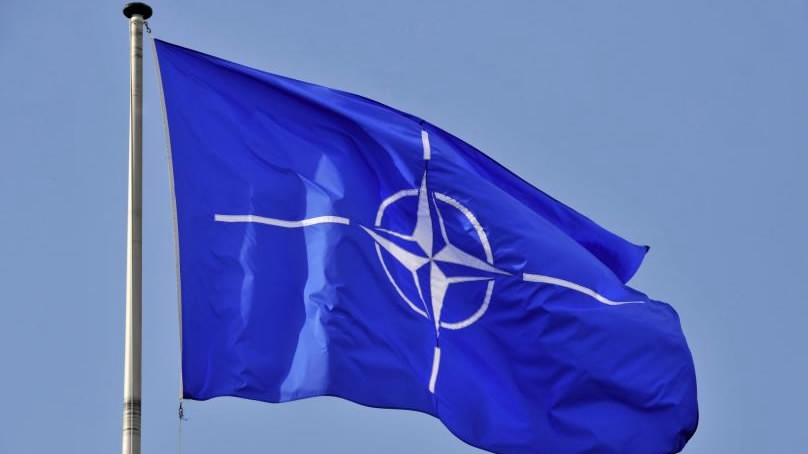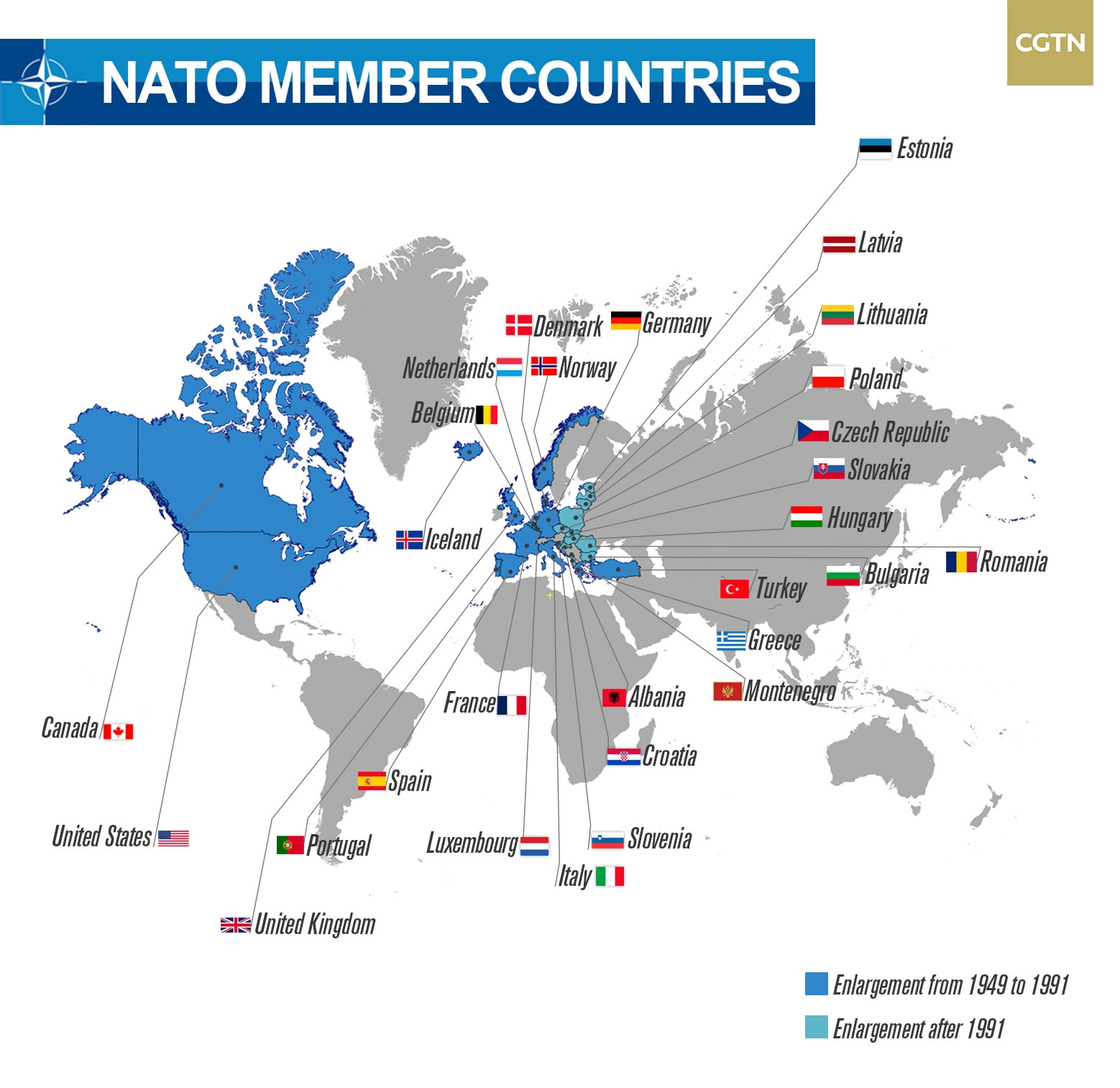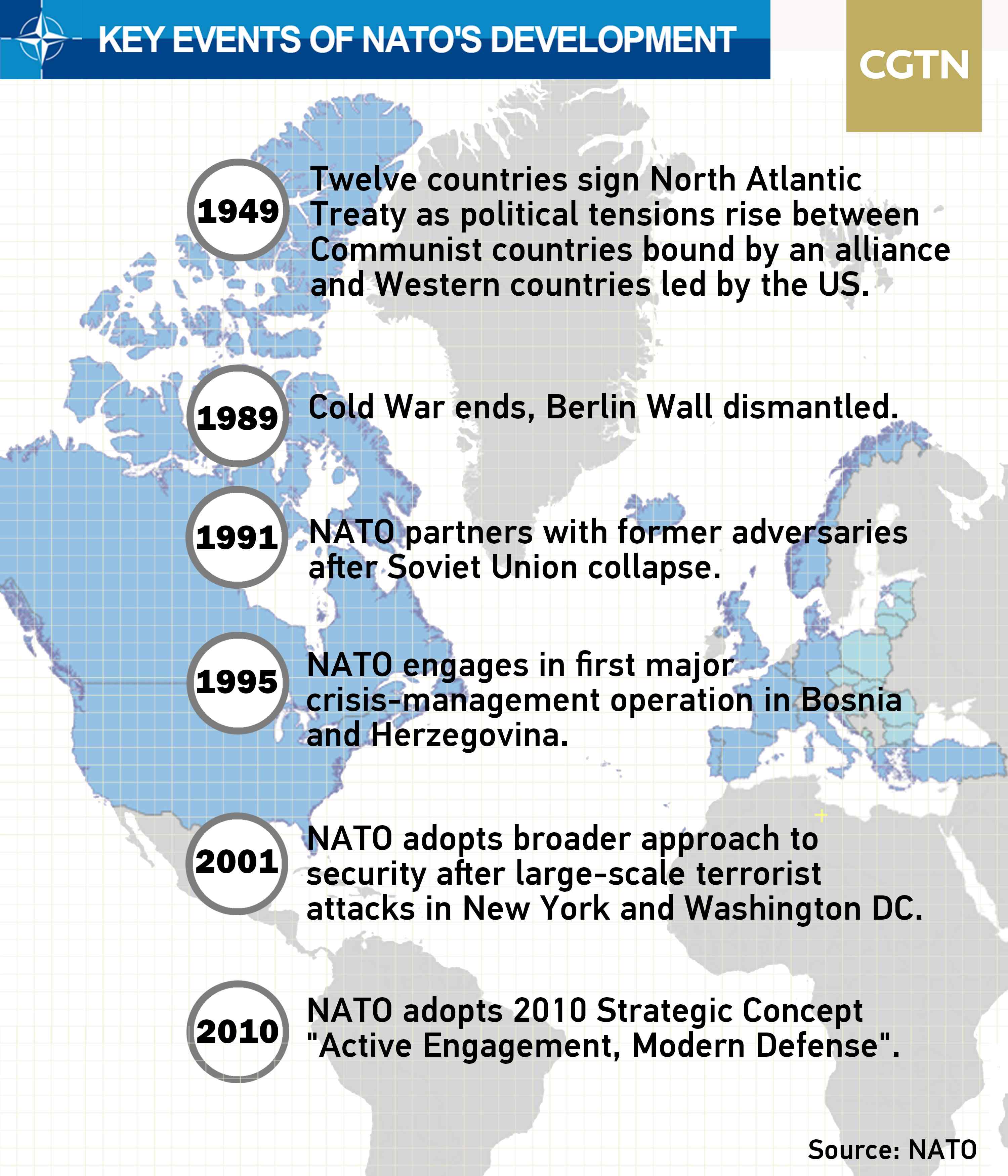
Politics
15:42, 15-Feb-2018
NATO in history: Purpose and evolution
CGTN

Founded in 1949 against the backdrop of growing Soviet Union influence in Europe and the early years of the Cold War, NATO (North Atlantic Treaty Organization) is the world's largest regional military cooperation group.
The NATO charter states that members are "determined to safeguard the freedom, common heritage and civilization of their people" and "seek to promote stability and well-being in the North Atlantic Area."
NATO membership
There were 12 founding members of NATO: Belgium, Britain, Canada, Denmark, France, Iceland, Italy, Luxembourg, the Netherlands, Norway, Portugal and the United States.
Unhappy with its role in the organization, France opted to withdraw from military participation in NATO in 1966 and did not return until 1995.

The group has expanded with the accession of Central and Eastern European in the post-Cold War era: Czech Republic, Hungary and Poland were admitted in 1999; Bulgaria, Estonia, Latvia, Lithuania, Romania, Slovakia, Slovenia joined in 2004; and Albania and Croatia in 2009.
The latest enlargement was in 2017, when the Balkan country Montenegro was brought into the military alliance, a move strongly opposed by Russia.
Three further countries have declared their aspirations to membership: Bosnia and Herzegovina, Georgia and the Former Yugoslav Republic of Macedonia, again displeasing Russia.
The evolution of NATO

Cold War period (1949-1991)
NATO was founded as a US-Western Europe alliance, a purely defensive organization, aiming to "provide collective security against the Soviet Union" after the end of Second World War.
The principle of “collective defense” – that an attack against one member is an attack against all – is the cornerstone of the alliance. It was invoked for the first time after the 9/11 terror attacks in the US in 2001.
"Only a truly transatlantic security agreement could deter Soviet aggression while simultaneously preventing the revival of European militarism and laying the groundwork for political integration," NATO states on its website.
In 1955, the Soviet Union founded a rival alliance, the Warsaw Pact, with its affiliated Communist nations in Eastern Europe.
The NATO bloc v.s. the Warsaw Pact alignment provided the framework for the military standoff – both sides built up their armies and weapons in an arms race, leading to a divided Europe that continued throughout the Cold War period.
The Warsaw Pact dissolved automatically following the fall of the Soviet Union in 1991, ending the standoff between the two blocs and removing NATO’s primary purpose.
Post-Cold War (After 1991)
The Rome Summit in November 1991 signaled a watershed in the history of NATO, redefining its role and mission in the new Europe and guiding the alliance's transformation.
Leaders who attended the summit issued a new strategic concept reflecting their intention to streamline NATO forces, undertake further arms reductions and reorganize NATO's Military Command Structure. The development of cooperation with other countries is also a central part of the new concept.
The group described itself as "a tool for the stabilization of Eastern Europe and Central Asia through the incorporation of new Partners and Allies," resulting in an expansion of membership from 16 to 28.
NATO also adopted a more proactive approach to "out of area" activities, saying that instability in any part of Europe would constitute a threat to its members. The alliance's largest ever airstrikes against Yugoslavia in 1999 and the first operation outside Europe in Afghanistan in 2003 followed.
During the Lisbon Summit in 2010, NATO Secretary-General Anders Fogh Rasmussen described the alliance entered into as "NATO 3.0." with a new "strategic concept."
It focuses on a missile defense covering all of the territory of its European members, cutting costs, and defense against new emerging threats such as cyber security, given the increasing complexity of the security environment.

SITEMAP
Copyright © 2018 CGTN. Beijing ICP prepared NO.16065310-3
Copyright © 2018 CGTN. Beijing ICP prepared NO.16065310-3